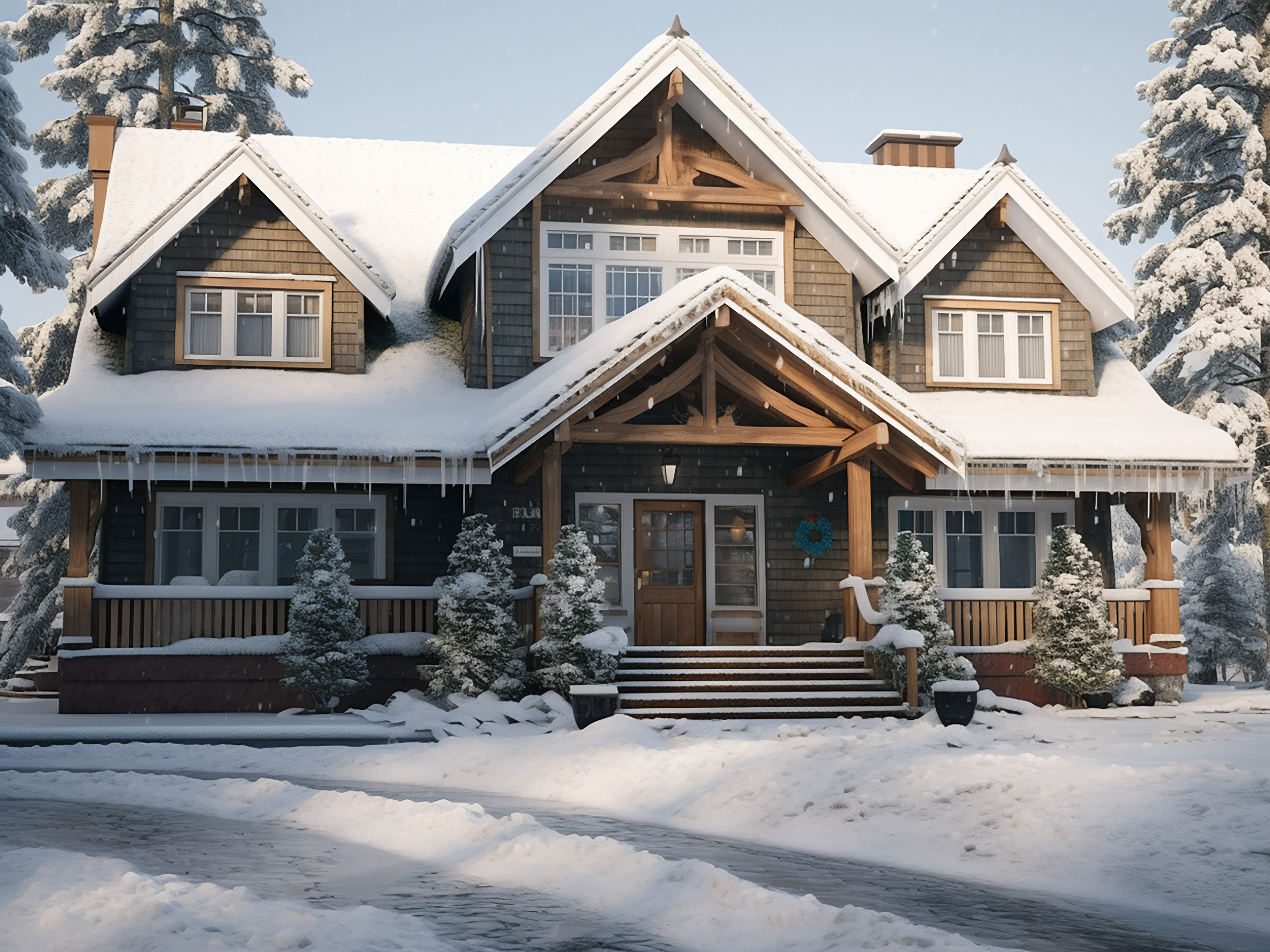As the leaves begin to fall and temperatures drop, it’s time to start thinking about preparing your home for the cold months ahead. Winterizing your home’s exterior is crucial to protect it from harsh weather conditions and prevent costly damage. In this guide, we’ll walk you through the essential steps to prepare every aspect of your home’s exterior for winter.
Roof preparation: Inspect and clean
Your roof is your home’s first defense against snow and ice, so making sure it’s in good shape is crucial. Here’s how to ensure it’s ready for winter:
- Check for missing or damaged shingles: Walk around your home or use binoculars to inspect the roof. Look for missing, curling or damaged shingles, and replace them to prevent leaks.
- Clear debris: Leaves, twigs and other debris can accumulate in gutters and on your roof, leading to blockages and ice dams. Clean the gutters and ensure water flows away from your home’s foundation.
- Inspect flashing and chimney: Make sure the flashing around your chimney, skylights and vents is secure to avoid leaks. Have a professional inspect your chimney for any cracks or blockages.
Gutters and downspouts: Clear and maintain
Ice dams and water damage can occur if your gutters are not functioning properly.
- Clean the gutters: Clear leaves, twigs and debris from gutters and downspouts to ensure water flows away from your home.
- Check for proper drainage: Ensure downspouts direct water at least 3-4 feet away from your foundation to prevent basement flooding.
- Install gutter guards: If you live in an area with a lot of trees, installing gutter guards can prevent debris from clogging your gutters.
Siding maintenance: Seal and protect
Your siding maintenance provides an essential layer of protection from the elements. Before winter sets in, ensure it’s in good condition.
- Clean the siding: Remove any dirt, mildew or grime to prevent damage during the winter. You can use a pressure washer on a low setting or scrub with a brush and mild detergent.
- Check for cracks or gaps: Inspect your siding for any visible cracks or gaps that can let moisture in. Sealing these gaps with caulk will prevent water from seeping into your walls and freezing.
- Repaint or stain: If your siding looks worn, a fresh coat of paint or stain will provide extra protection from the elements.
Windows and doors: Insulate and seal
Cold air seeping through your windows and doors can cause drafts, decreasing your home’s heating efficiency and increasing your energy bills.
- Check for drafts: Feel around the edges of windows and doors for cold air. If you find drafts, use weatherstripping or caulk to seal any gaps.
- Install storm windows and doors: If you have storm windows or doors, now is the time to install them for an extra layer of insulation.
- Check caulking and weatherstripping: Old or cracked caulking around windows and doors should be replaced to keep out moisture and cold air.
- Consider window insulation film: This can help reduce heat loss due to older windows.
Decks and porches: Prevent winter damage
Your deck can take a beating from winter weather, so it’s essential to prepare it to handle snow and ice. Protect your outdoor living spaces from winter’s harsh conditions:
- Clean the deck: Remove debris, leaves and dirt to prevent mold and mildew growth. Use a deck cleaner or a mild detergent to scrub away stains.
- Inspect for loose boards or nails: Tighten any loose screws or nails and replace any boards that are rotting or damaged.
- Seal the deck: Applying a waterproof sealant will protect the wood from moisture, preventing warping, cracking and damage from freezing temperatures.
Foundation: Protect from frost
The foundation of your home is particularly vulnerable during winter. Cold temperatures and excess moisture can cause cracks and other issues. Foundation maintenance is crucial for your home’s structural integrity:
- Check for cracks: Inspect your foundation for cracks and seal them with a high-quality caulk or masonry sealer.
- Clear debris from the foundation: Make sure leaves and debris are cleared away from the foundation to prevent moisture buildup.
- Install insulation: If your foundation isn’t insulated, consider adding insulation to protect it from freezing temperatures and reduce energy costs.
- Insulate exposed pipes: Wrap pipes in unheated areas to prevent freezing.
Landscaping for winter
Outdoor furniture and accessories can be damaged by winter weather, so it’s best to store or protect them.
- Store furniture: If possible, store outdoor furniture, grills and other accessories in a garage or shed. If storage isn’t an option, cover them with weather-resistant covers.
- Protect plants and lawn: Move potted plants indoors and apply a protective layer of mulch to your garden beds to help retain moisture and protect roots from freezing.
By following these steps, you’ll ensure your home’s exterior is well-prepared to withstand winter’s challenges. However, if you find any significant issues or feel overwhelmed by the process, don’t hesitate to call in the professionals.
Close to Home Construction specializes in exterior home maintenance and winterization. Our expert team can assess your home’s needs and provide comprehensive winterization services to keep your property safe and comfortable all season long.
Contact us today for a free consultation and let us help you prepare your home for winter!

